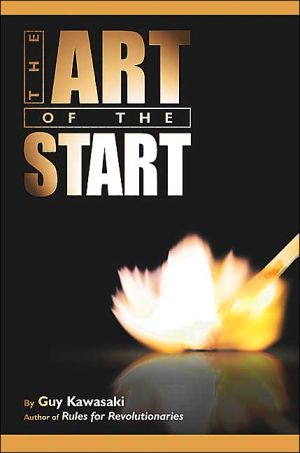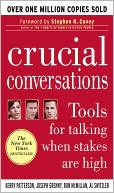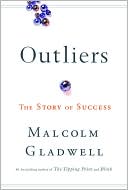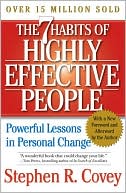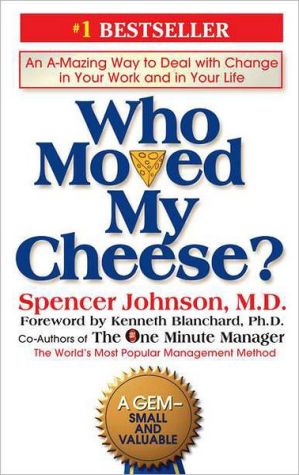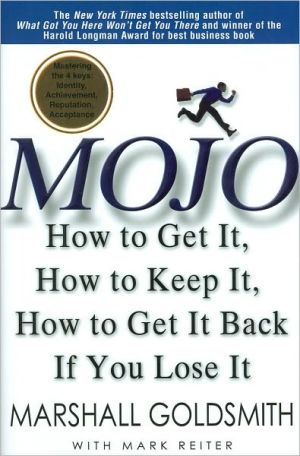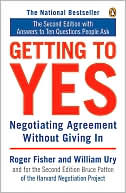The Art of the Start: The Time-Tested, Battle-Hardened Guide for Anyone Starting Anything
From raising money to hiring the right people, form defining your positioning to building a brand, from creating buzz to buzzing the competition, from managing a board to fostering a community, this book will guide you through an adventure that's more art than science - the art of the start.
Search in google:
A new product, a new service, a new company, a new division, a new anything—where there's a will, Kawasaki shows the way with his essential steps to launching one's dreams. Publishers Weekly Kawasaki (Rules for Revolutionaries) draws upon his dual background as an evangelist for Apple's Macintosh computer and as a Silicon Valley venture capitalist in this how-to for launching any type of business project. Each chapter begins with "GIST" ("great ideas for starting things"), covering a variety of facets to consider, from identifying your customer base and writing a business plan to establishing partnerships and building brand identity. Minichapters zero in on particular jobs that will need doing, while FAQ sections address the questions readers are most likely to have: Kawasaki covers the basics in an effectively casual tone. Much of the advice, however, consists of generic banalities-start your company's name with a letter that comes early in the alphabet, use big type in presentation slides for older businessmen with declining eyesight, and avoid writing e-mails in all capital letters-that can be found in any mediocre guide. Fortunately, Kawasaki does rise to the occasion here and there. He goes into great detail when it comes to raising capital and offers effective methods for sorting through the nonsense associated with interviewing prospective employees. (Sept. 9) Forecast: Drawn in part from readers of the Forbes column from which the book takes its title, Kawasaki's fan base will seek this one out (and overlook the weaker sections to get to the usable nuggets). Copyright 2004 Reed Business Information.
The Art Of The Start\ The Time-tested, Battle-hardened Guide For Anyone Starting Anything \ \ By Guy Kawasaki \ Portfolio\ ISBN: 1-59184-056-2 \ \ \ Chapter One\ The Art of Starting \ Everyone should carefully observe which way his heart draws him, and then choose that way with all his strength. -Hasidic saying\ GIST (GREAT IDEAS FOR STARTING THINGS)\ I use a top-ten list format for all my speeches, and I would love to begin this book with a top-ten list of the most important things an entrepreneur must accomplish. However, there aren't ten-there are only five:\ 1. MAKE MEANING (inspired by John Doerr). The best reason to start an organization is to make meaning-to create a product or service that makes the world a better place. So your first task is to decide how you can make meaning.\ 2. MAKE MANTRA. Forget mission statements; they're long, boring, and irrelevant. No one can ever remember them-much less implement them. Instead, take your meaning and make a mantra out of it. This will set your entire team on the right course.\ 3. GET GOING. Start creating and delivering your product or service. Think soldering irons, compilers, hammers, saws, and AutoCAD-whatever tools you use to build products and services. Don't focus on pitching, writing, and planning.\ 4. DEFINE YOUR BUSINESS MODEL. No matter what kind of organization you're starting, you have to figure out a way to make money. The greatest idea, technology, product, or service is short-lived without a sustainable business model.\ 5. WEAVE A MAT (MILESTONES, ASSUMPTIONS, AND TASKS). The final step is to compile three lists: (a) major milestones you need to meet; (b) assumptions that are built into your business model; and (c) tasks you need to accomplish to create an organization. This will enforce discipline and keep your organization on track when all hell breaks loose-and all hell will break loose.\ MAKE MEANING\ I have never thought of writing for reputation and honor. What I have in my heart must come out; that is the reason why I compose. -Ludwig van Beethoven\ Many books about entrepreneurship begin with a rigorous process of self-examination, asking you to determine if you are truly up to the task of starting an organization. Some typical examples are\ Can you work long hours at low wages?\ Can you deal with rejection after rejection?\ Can you handle the responsibility of dozens of employees?\ The truth is, it is impossible to answer questions like this in advance, and they ultimately serve no purpose. On the one hand, talk and bravado are cheap. Saying you're willing to do something doesn't mean that you will do it.\ On the other hand, realizing that you have doubt and trepidation doesn't mean you won't build a great organization. How you answer these questions now has little predictive power regarding what you'll actually do when you get caught up in a great idea.\ The truth is that no one really knows if he is an entrepreneur until he becomes one-and sometimes not even then. There really is only one question you should ask yourself before starting any new venture:\ Do I want to make meaning?\ Meaning is not about money, power, or prestige. It's not even about creating a fun place to work. Among the meanings of "meaning" are to\ Make the world a better place.\ Increase the quality of life.\ Right a terrible wrong.\ Prevent the end of something good.\ Goals such as these are a tremendous advantage as you travel down the difficult path ahead. If you answer this question in the negative, you may still be successful, but it will be harder to become so because making meaning is the most powerful motivator there is.\ It's taken me twenty years to come to this understanding.\ In 1983, when I started in the Macintosh Division of Apple Computer, beating IBM was our reason for existence. We wanted to send IBM back to the typewriter business holding its Selectric typewriter balls.\ In 1987, our reason for existence became beating Windows and Microsoft. We wanted to crush Microsoft and force Bill Gates to get a job flipping fish at the Pike Place Market.\ In 2004, I am a managing director in an early-stage venture capital firm called Garage Technology Ventures. I want to enable people to create great products, build great companies, and change the world.\ The causation of great organizations is the desire to make meaning. Having that desire doesn't guarantee that you'll succeed, but it does mean that if you fail, at least you failed doing something worthwhile.\ MAKE MANTRA\ Close your eyes and think about how you will serve your customers. What kind of meaning do you see your organization making? Most people refer to this as the "Why" or mission statement of an organization.\ Crafting a mission statement is usually one of the first steps entrepreneurs undertake. Unfortunately, this process is usually a painful and frustrating experience that results in exceptional mediocrity. This is almost inevitable when a large number of people are commissioned to craft something designed to make an even larger number of people (employees, shareholders, customers, and partners) happy.\ The fundamental shortcoming of most mission statements is that everyone expects them to be highfalutin and all-encompassing. The result is a long, boring, commonplace, and pointless joke. In The Mission Statement Book, Jeffrey Abrams provides 301 examples of mission statements that demonstrate that companies are all writing the same mediocre stuff. To wit, this is a partial list of the frequency with which mission statements in Abrams's sample contained the same words:\ Best-94\ Communities-97\ Customers-211\ Excellence-77\ Leader-106\ Quality-169\ Fortune (or Forbes, in my case) favors the bold, so I'll give you some advice that will make life easy for you: Postpone writing your mission statement. You can come up with it later when you're successful and have lots of time and money to waste. (If you're not successful, it won't matter that you didn't develop one.)\ Instead of a mission statement and all the baggage that comes with it, craft a mantra for your organization.\ The definition of mantra is\ A sacred verbal formula repeated in prayer, meditation, or incantation, such as an invocation of a god, a magic spell, or a syllable or portion of scripture containing mystical potentialities.\ What a great thing a mantra is! How many mission statements evoke such power and emotion?\ The beauty of a mantra is that everyone expects it to be short and sweet. (Arguably, the world's shortest mantra is the single Hindi word Om.) You may never have to write your mantra down, publish it in your annual report, or print it on posters. Indeed, if you do have to "enforce" your mantra in these ways, it's not the right mantra.\ Following are five examples that illustrate the power of a good mantra:\ Authentic athletic performance (Nike).\ Fun family entertainment (Disney).\ Rewarding everyday moments (Starbucks).\ Think (IBM).\ Winning is everything (Vince Lombardi's Green Bay Packers).\ Compare the Starbucks mantra, "Rewarding everyday moments," to the company's mission statement, "Establish Starbucks as the premier purveyor of the finest coffee in the world while maintaining our uncompromising principles while we grow." Which is more memorable?\ Imagine that someone asks your parents or your organization's receptionist what you do. Can it get any better than a three-word mantra such as "Authentic athletic performance"? A final thought on mantras: Don't confuse mantras and tag lines. A mantra is for your employees; it's a guideline for what they do in their jobs. A tag line is for your customers; it's a guideline for how to use your product or service. For example, Nike's mantra is "Authentic athletic performance." Its tag line is "Just do it."\ Get Going\ The third step is not to fire up Word to write a business plan, launch PowerPoint to craft a pitch, or boot Excel to build a financial projection. Wrong, wrong, wrong!\ My goal in giving you this advice is not to reduce the sales of Microsoft Office-remember, I'm off the anti-Microsoft podium. There's a time for using all three applications, but it's not now. What you should do is (a) rein in your anal tendency to craft a document and (b) implement.\ This means building a prototype, writing software, launching your Web site, or offering your services. The hardest thing about getting started is getting started. (This is as true for a writer as it is for an entrepreneur.) Remember: No one ever achieved success by planning for gold.\ You should always be selling-not strategizing about selling. Don't test, test, test-that's a game for big companies. Don't worry about being embarrassed. Don't wait to develop the perfect product or service. Good enough is good enough. There will be plenty of time for refinement later. It's not how great you start-it's how great you end up.\ The enemy of activation is cogitation, and at this stage, cogitating the "strategic" issues of research and development is a problem. Questions like, How far can we leap ahead? What if everyone doesn't like what we do? and Should we design for a target customer or make what we would want to use? are beside the point when you're getting a new venture off the ground.\ Instead, observe these key principles of getting going:\ THINK BIG. Set your sights high and strive for something grand. If you're going to change the world, you can't do it with milquetoast and boring products or services. Shoot for doing things at least ten times better than the status quo. When Jeff Bezos started Amazon. com, he didn't build a bookstore with a paltry 25,000 more titles than the 250,000-title brick-and-mortar bookstores. He went to 3,000,000 titles in an online bookstore.\ FIND A FEW SOULMATES. History loves the notion of the sole innovator: Thomas Edison (light bulb), Steve Jobs (Macintosh), Henry Ford (Model T), Anita Roddick (The Body Shop), Richard Branson (Virgin Airlines). History is wrong. Successful companies are started, and made successful, by at least two, and usually more, soulmates. After the fact, one person may come to be recognized as "the innovator," but it always takes a team of good people to make any venture work.\ POLARIZE PEOPLE. When you create a product or service that some people love, don't be surprised when others hate you. Your goal is to catalyze passion-pro or anti. Don't be offended if people take issue with what you've done; the only result that should offend (and scare) you is lack of interest.\ Car design is a good example of the love-versus-hate reaction; consider the bifurcation of people's reactions to cars such as the Mini Cooper, Infiniti Fx45, and Toyota Scion xB. People are either devoted fans or relentless critics, and that's good.\ DESIGN DIFFERENT. Depending on what management fad is hot, you might be tempted to believe that there is only one ideal way to design products and services. This isn't true. There is no single best way. Here are four different and valid approaches-and I am sure there are more.\ "I WANT ONE." This is the best kind of market research-the customer and the designer are the same person. Therefore, the customer's voice can reach the designer's mind uncorrupted by corporate politics, reliance on the status quo, and market researchers. Example: Ferdinand Porsche said, "In the beginning I looked around and, not finding the automobile of my dreams, decided to build it myself."\ "MY EMPLOYER COULDN'T (OR WOULDN'T) DO IT." Not as romantic as "I want one," but this is a credible path. You already understand the customer base, competition, supply sources, and industry contacts because of your background. You still need to build the product or service and get customers, but many questions are already answered. For example, alumni of Unit 8200 of the Israeli Defense Forces went on to create companies such as Checkpoint after developing security software for the military.\ "WHAT THE HELL-IT'S POSSIBLE!" This theory isn't popular when times are tough, and microscopes are flourishing. At these times, the world has turned conservative and demands that every market be "proven." Markets for curve-jumping, paradigm-shifting leaps are seldom proven in advance. For example, when Motorola invented cellular telephones, no one leaped to buy them. At that time, portable phone was an oxymoron because phones were always attached to places. There was no market for phones that customers could move.\ "THERE MUST BE A BETTER WAY." The organization born of this philosophy is based on the idealistic notion that you can make the world a better place by doing something new. In many cases, the founders had backgrounds with no logical connection to the business. They simply got an idea and decided to do it. Example: eBay. Pierre Omidyar, the founder, wanted to implement a system for a "perfect market" for the sale of goods. (The story of his girlfriend wanting to sell Pez dispensers was an after-the-fact PR tale.)\ USE PROTOTYPES AS MARKET RESEARCH. In the early days of an organization, there is high uncertainty about exactly what you should create and exactly what customers want. In these times, traditional market research is useless-there is no survey or focus group that can predict customer acceptance for a product or service that you may barely be able to describe. Would you buy a new computer with no software, no hard disk, and no color that simulates the real world-including a trash can?\ The wisest course of action is to take your best shot with a prototype, immediately get it to market, and iterate quickly. If you wait for ideal circumstances in which you have all the information you need (which is impossible), the market will pass you by.\ The expected outcome of the "get going" principle is a first release of a product or service. Remember: it won't be perfect. But don't revise your product to get prospective customers to love it. Instead, revise it because customers already love it. Let me put it in religious terms: Some people believe that if they change, God will love them. Others believe that since God loves them, they should change. The latter theory is the prototype to keep in mind for how to get going and keep going for startups.\ DEFINE YOUR BUSINESS MODEL\ You want to make meaning. You've come up with a mantra. You've started prototyping your product or service. The fourth step is to define a business model. To do this you need to answer two questions:\ Who has your money in their pockets?\ How are you going to get it into your pocket?\ These questions lack subtlety, but they are a useful way to consider the reality of starting an organization-even, and perhaps especially, not-for-profits, which have to fight for money just to stay alive. You can't change the world if you're dead, and when you're out of money you're dead.\ More elegantly stated, the first question involves defining your customer and the pain that he feels.\ \ Continues...\ \ \ \ Excerpted from The Art Of The Start by Guy Kawasaki Excerpted by permission.\ All rights reserved. No part of this excerpt may be reproduced or reprinted without permission in writing from the publisher.\ Excerpts are provided by Dial-A-Book Inc. solely for the personal use of visitors to this web site. \ \
Ch. 1The art of starting3Ch. 2The art of positioning29Ch. 3The art of pitching44Ch. 4The art of writing a business plan66Ch. 5The art of bootstrapping79Ch. 6The art of recruiting100Ch. 7The art of raising capital119Ch. 8The art of partnering151Ch. 9The art of branding167Ch. 10The art of rainmaking192Ch. 11The art of being a mensch211
\ From Barnes & NobleForbes columnist Guy Kawasaki developed this book from a "Boot-Camp for Start-Ups" that he conducted. The Art of the Start covers all aspects of the start-up: the goals of the venture, the positioning in the marketplace; the business plan; cash management; recruiting; raising capital partnering; branding; and more. This book was written with the realities of the post-1999 stagnant economy specifically in mind. Kawasaki, who is known as the "Father of Evangelism Marketing," has a well-earned reputation for motivating entrepreneurs.\ \ \ \ \ Publishers WeeklyKawasaki (Rules for Revolutionaries) draws upon his dual background as an evangelist for Apple's Macintosh computer and as a Silicon Valley venture capitalist in this how-to for launching any type of business project. Each chapter begins with "GIST" ("great ideas for starting things"), covering a variety of facets to consider, from identifying your customer base and writing a business plan to establishing partnerships and building brand identity. Minichapters zero in on particular jobs that will need doing, while FAQ sections address the questions readers are most likely to have: Kawasaki covers the basics in an effectively casual tone. Much of the advice, however, consists of generic banalities-start your company's name with a letter that comes early in the alphabet, use big type in presentation slides for older businessmen with declining eyesight, and avoid writing e-mails in all capital letters-that can be found in any mediocre guide. Fortunately, Kawasaki does rise to the occasion here and there. He goes into great detail when it comes to raising capital and offers effective methods for sorting through the nonsense associated with interviewing prospective employees. (Sept. 9) Forecast: Drawn in part from readers of the Forbes column from which the book takes its title, Kawasaki's fan base will seek this one out (and overlook the weaker sections to get to the usable nuggets). Copyright 2004 Reed Business Information.\ \ \ Library JournalKawasaki has been a Silicon Valley fixture since he helped put Apple Computer Company on the map. Since then, he has started a successful venture capital company and written seven books (e.g., Rules for Revolutionaries). His newest work addresses entrepreneurs who want to grow beyond being a company of one as well as innovators who work for large companies. Kawasaki writes in a conversational style that references his own life experience and sources as divergent as Peter Drucker and Seth Godin. The result is a handbook that has lots of useful information, though it will cause most would-be start-up artists to think twice about ever approaching a venture capitalist. It will also inspire people with great ideas to think hard about building a solid business with real cash flow. Unfortunately, the book seems to be written around the needs of technology start-ups and is not quite as useful for traditional businesses. Therefore, only public libraries with a vast business collection should add, but business school libraries should consider.-Stephen Turner, Turner & Assocs., San Francisco Copyright 2004 Reed Business Information.\ \ \ \ \ Soundview Executive Book SummariesEntrepreneur is not a job title: It's the state of mind of people who want to alter the future. Doing, not learning to do, is the essence of entrepreneurship. Guy Kawasaki writes that his goal is to help you use your knowledge, love and determination to create something great without getting bogged down in theory and unnecessary details. In The Art of the Start, he presumes that your goal is to change the world — not study it.\ At Apple in the 1980s, Kawasaki was a powerful leader who turned ordinary consumers into evangelists. As founder and CEO of Garage Technology Ventures, he has field-tested his ideas with dozens of newly hatched companies.\ In The Art of the Start, Kawasaki takes you through every phase of creating a business, from the very basics of raising money and designing a business model through the many stages that will eventually lead your company to doing the right thing and giving back to society.\ A Better Place\ To alter the future, an entrepreneur must:\ \ Make meaning. Create something that makes the world a better place.\ Make mantra. This is a powerful, emotional statement of what the company is all about.\ Get going. Get your product or service to market, even though it's not perfect.\ Define your business model. Do the following: \ \ Target your customer specifically.\ Keep it simple. Describe your business model in 10 words or less with little or no business jargon.\ Copy somebody. Relate your business model to one that's already successful and understood.\ \ \ Weave a MAT — Milestones, Assumptions and Tasks. Compile these three lists: \ \ Milestones you must meet: e.g., complete design specifications, raise capital.\ Assumptions about your business: e.g, market size, gross margins.\ Tasks necessary to design, manufacture, sell, ship and support your product or service.\ \ \ \ \ \ \ Make business cards and letterheads immediately. You also need a Web site and a domain name.\ The Art of Positioning\ Positioning is a clear statement of why the founders started the organization, why customers should patronize it and why good people should work at it. Good positioning is:\ \ Customer-centric. It's all about what you do for your customers.\ Empowering. It shows your employees they're making the world better.\ Practical. It's easily understood and believed by customers, vendors, employees, journalists and partners. It uses plain English, not industry jargon. And it is founded on the core competencies of your organization.\ \ \ \ \ Clearly differentiate yourself from the competition. Instead of near-universal terms likes high quality or easy-to-use, offer concrete proof points that convey your unique qualities.\ Pick a company name that will make your positioning easier. Use a first initial that's early in the alphabet and avoid words that begin with X or Z.\ The availability of a domain name should be a factor in naming the organization. You need a domain name that people can easily remember and use.\ Everyone in the company, including your directors and advisers, should understand the positioning. Put it into a short document and discuss it in an all-hands meeting.\ The Art of Pitching\ In the first minute of your pitch, don't lead off with a heartfelt autobiographical tale. Explain what your company does. Then your audience can listen to everything else with a more focused perspective. If they remember that alone, your pitch will be better than 90 percent of the competition.\ You want to communicate enough to get to the next step. If it's funding, then you want a meeting with more partners in the firm. If it's a sale, then you want a test installation or a small purchase. If it's a partnership, then it's meeting more people within the organization.\ Your audience doesn't necessarily understand the importance of what you're saying, so every time you make a statement, consider following it with an answer to the question So what? Know your audience. A great pitch starts with the research you do before the meeting. Visit the organization's Web site, use Google searches, read reports and talk to your industry contacts. Ask the person who invited you: What are the most important things you'd like to learn about us? What attracted you to our idea? Are there any special issues or questions I should be prepared for?\ Keep the pitch down to 10 slides and 20 minutes to allow for discussion. The CEO should do 80 percent of the talking. The rest of the team (no more than two others) can present the one or two slides pertaining to their expertise. Copyright © 2005 Soundview Executive Book Summaries\ \ —Soundview Summary\ \ \ \ \ From the Publisher"Paul Boehmer's urgent reading has exactly the right pacing and energy for the author's call-to-action tone." —-AudioFile\ \
